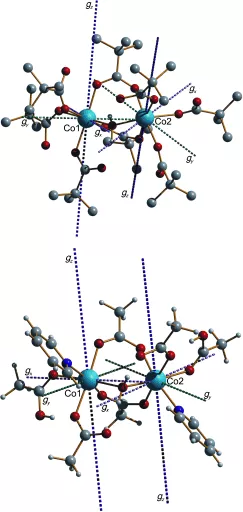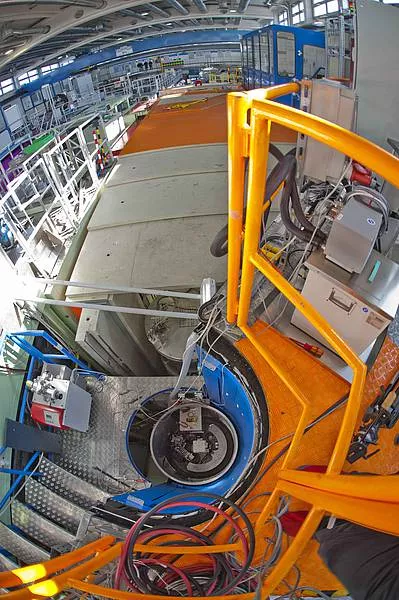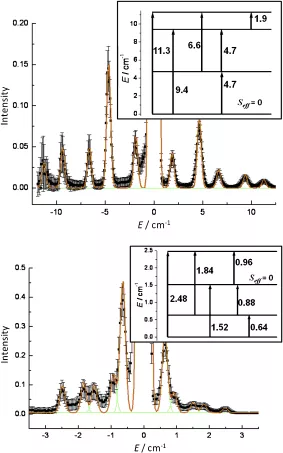The work has been published in the journal Angewandte Chemie. Previous work has not had available the detailed, well resolved inelastic neutron scattering or EPR spectra that has been available for this study. For the neutron scattering work, the combination of energy resolution and high flux available at the TOFTOF spectrometer was key to the success of the experiment. Further the small energy scale of the system meant that ultra low temperatures of 0.7 K were required, this made use of the cryogen free 3He insert. The detailed experimental work has been supported by ab initio calculations performed at the University of Leuven.
The work forms a basis to advance design strategies in the field of cobalt based single molecule magnets. These materials are candidates both for the ability to store a computational bit on a single molecule which would allow ultra high density data storage. They also have the potential to act as Qbits in quantum computers.
Original publication:
A Spectroscopic Investigation of Magnetic Exchange Between Highly Anisotropic Spin Centers
Dr. Angelika B. Boeer, Dr. Anne-Laure Barra, Prof. Liviu F. Chibotaru, Prof. David Collison, Prof. Eric J. L. McInnes, Dr. Richard A. Mole, Dr. Giovanna G. Simeoni, Dr. Grigore A. Timco, Dr. Liviu Ungur, Dr. Tobias Unruh, Prof. Richard E. P. Winpenny
Angewandte Chemie, International Edition, Online on March 29th 2011, DOI: 10.1002/anie.201100306


